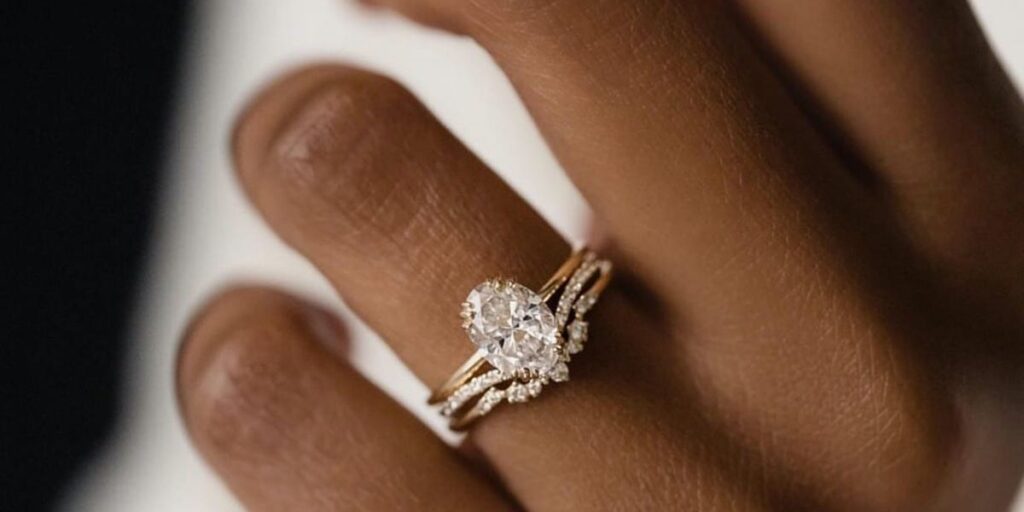It’s a good time to check the price tag on the engagement ring you have bookmarked for that special moment.
With the cost of gold having hit record highs and gemstones no longer exempt from tariffs, jewelers are having to assess their pricing strategy to balance business costs and customer expectations.
Gold spot prices briefly topped $3,500 per ounce on Tuesday, up sharply from around $3,000 a month ago. Imported gemstones are now also subject to President Donald Trump’s sweeping “baseline” tariffs that took effect April 2.
“For the industry, it’s really a double whammy,” Angara CEO and founder Ankur Daga told Business Insider.
Daga’s company specializes in customized direct-to-consumer jewelry, and he said engagement rings make up more than a third of his business. The majority of his production happens in Thailand, but Ankara has a US workshop where it finishes items that include the previously duty-free gemstones.
For a typical engagement ring, Daga said about 80% of the cost is determined by the gem, with about 20% from the metal itself. For wedding bands without jewels, the price is driven by the metal.
“If nothing changes, our total adjustment upwards will have to take both into account,” he said.
“People can’t necessarily rush their engagements,” he added, “but you can buy a ring in advance.”
Audrey Yonkus, jewelry designer and founder of Bieta & Co., said gold prices have risen by more than $1,000 since she started her own jewelry business last summer. In July 2024, gold reached over $2,400 per ounce. When it comes to engagement rings, customers are willing to pay more for their dream ring, she said.
“Whether or not gold reaches $5,000 an ounce, people are going to want to get engaged, and they’re still going to get engagement rings,” Yonkus said.
Daga said rising prices have the effect of driving more people to buy rather than discouraging them, an observation echoed by Gabriel & Co. cofounder Dominick Gabriel, who has been in business for 35 years.
“Even when prices rise, most consumers don’t hold back,” Gabriel said. “In fact, they often double down — becoming even stronger believers in the value of gold and choosing to invest more, seeing it as a smart and meaningful purchase.”
Bieta’s Yonkus told BI that she tries to work within a client’s budget using a made-to-order business model, even if it costs the company money, which she says it has.
Roen founder Sherry Shi told BI that her company has already had to raise the price on most of its fine jewelry and engagement rings due to gold prices. Shi said they tried to keep the increases under 15%, but it was unsustainable to leave them as they were in 2024.
“A lot of us tried not to raise prices as gold was going up, but it’s to a point where a year ago it was $2,200, and now it’s $3,500” Shi said.
Thankfully, she said, they ordered gems ahead of the tariffs — though they’ll have to reassess once that supply runs out.
Angara’s Daga also said his company is holding about a month’s supply of gems that arrived before the tariffs kicked in.
In other words, he said, would-be fiancés can expect to see across-the-board price increases of 10% or more starting to hit in June.
Read the full article here


